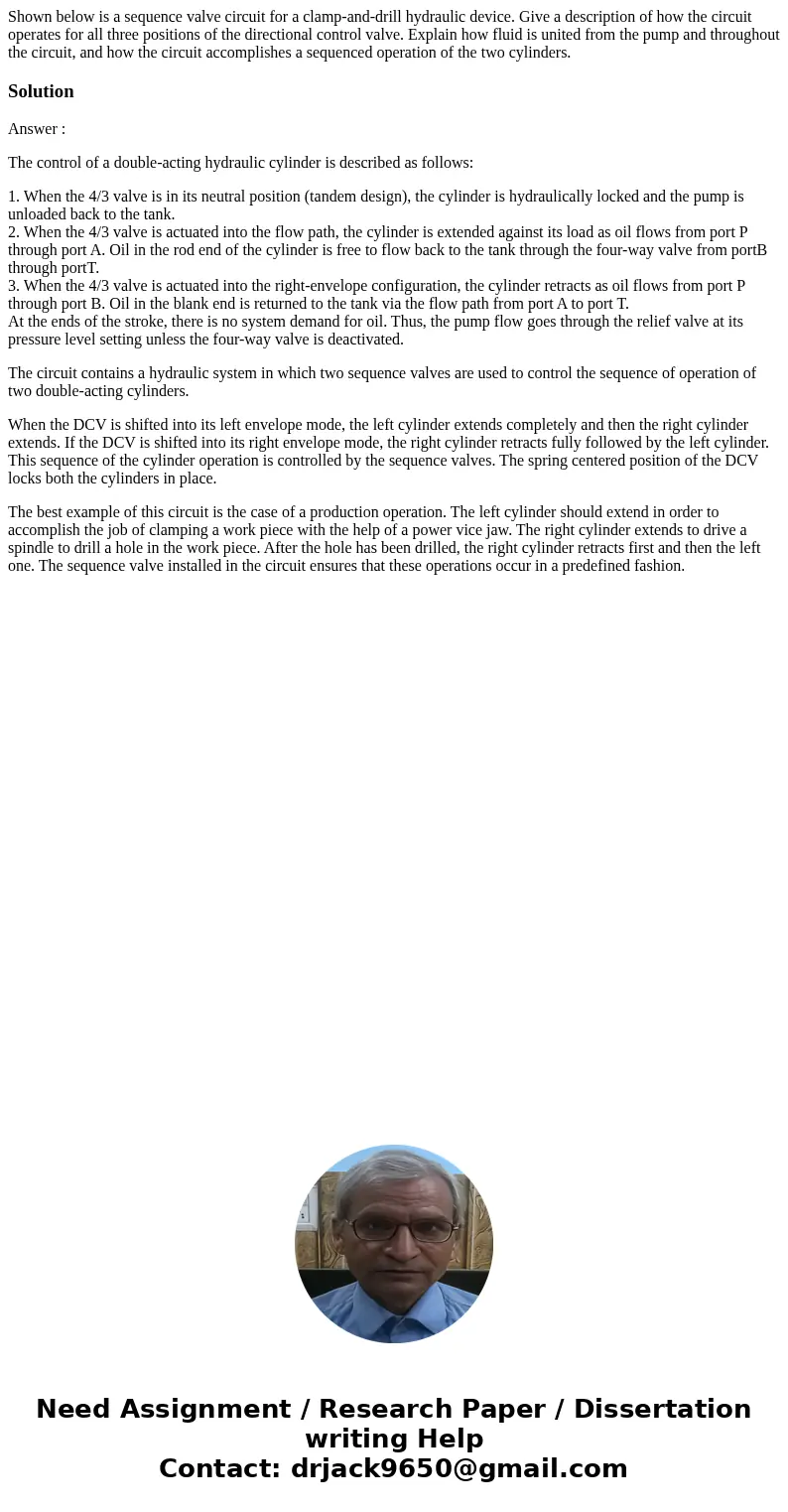Shown below is a sequence valve circuit for a clampanddrill
Solution
Answer :
The control of a double-acting hydraulic cylinder is described as follows:
1. When the 4/3 valve is in its neutral position (tandem design), the cylinder is hydraulically locked and the pump is unloaded back to the tank.
2. When the 4/3 valve is actuated into the flow path, the cylinder is extended against its load as oil flows from port P through port A. Oil in the rod end of the cylinder is free to flow back to the tank through the four-way valve from portB through portT.
3. When the 4/3 valve is actuated into the right-envelope configuration, the cylinder retracts as oil flows from port P through port B. Oil in the blank end is returned to the tank via the flow path from port A to port T.
At the ends of the stroke, there is no system demand for oil. Thus, the pump flow goes through the relief valve at its pressure level setting unless the four-way valve is deactivated.
The circuit contains a hydraulic system in which two sequence valves are used to control the sequence of operation of two double-acting cylinders.
When the DCV is shifted into its left envelope mode, the left cylinder extends completely and then the right cylinder extends. If the DCV is shifted into its right envelope mode, the right cylinder retracts fully followed by the left cylinder. This sequence of the cylinder operation is controlled by the sequence valves. The spring centered position of the DCV locks both the cylinders in place.
The best example of this circuit is the case of a production operation. The left cylinder should extend in order to accomplish the job of clamping a work piece with the help of a power vice jaw. The right cylinder extends to drive a spindle to drill a hole in the work piece. After the hole has been drilled, the right cylinder retracts first and then the left one. The sequence valve installed in the circuit ensures that these operations occur in a predefined fashion.

 Homework Sourse
Homework Sourse